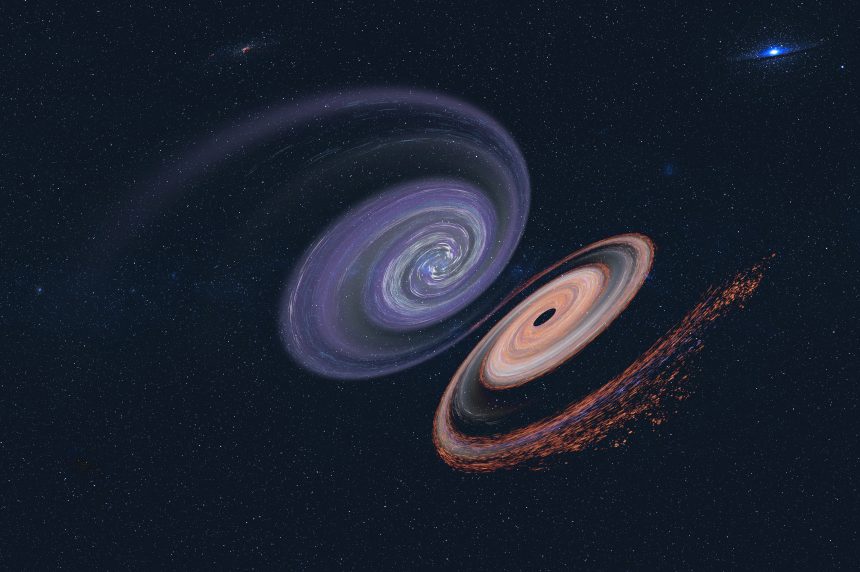In the cosmic arena, where the dance of celestial bodies unfolds across millennia, gravitational waves serve as subtle echoes of the universe’s most dramatic events. Predicted by Einstein and detected a century later, these spacetime ripples have opened a novel vista for understanding the cosmos. The latest frontier in this exploration is the realm of pulsars—stellar remnants that double as the universe’s metronomes. Researchers are now turning to the nuanced shifts in pulsar rhythms, known as parameter drifts, to probe gravitational waves in the elusive subnanohertz spectrum, promising a leap in our cosmic comprehension.
Pulsars: The Universe’s Steadfast Timekeepers
Pulsars, with their unwavering emissions, are akin to cosmic lighthouses, their beams cutting through the dark, guiding scientists with their rhythmic pulsing. Yet, when a gravitational wave courses through the space between Earth and a pulsar, it distorts this steadfast tempo. This interaction, captured by pulsar timing arrays (PTAs), provides a key to sensing the gravitational undercurrents disrupting these celestial beacons.
Journey into the Unknown: The Quest for Subnanohertz Signals
While facilities like LIGO have charted the higher frequency gravitational waves, birthed from cataclysms like black hole collisions, the subnanohertz range remains a frontier shrouded in mystery. It whispers tales of cosmic behemoths—the merging of galaxies and the dance of supermassive black holes at the dawn of time. The challenge and intrigue lie in detecting these faint rumbles with methodologies distinct from those applied to their higher-frequency counterparts.
The Subtle Art of Detecting Cosmic Whispers through Pulsars
Harnessing pulsar parameter drifts unveils a novel strategy in the gravitational wave detection arsenal. This method scrutinizes the minute shifts in the timing and frequency of pulsar emissions, seeking signs of spacetime’s gentle warp under gravitational waves’ sway. By pooling observations from a network of pulsars scattered like jewels across the galaxy, scientists envision a detector of cosmic proportions. This technique’s elegance lies in its reliance on the gravitational waves’ subtle effects on known celestial phenomena to infer their presence.
The Cosmic Revelations of Subnanohertz Detection
Unlocking the secrets of subnanohertz gravitational waves could redefine astrophysics, illuminating the universe’s hidden chapters. It promises insights into the enigmatic behavior of supermassive black holes, the grand tapestry of galaxy mergers, and the very fabric of spacetime. Beyond expanding our knowledge, it paves the way for “gravitational wave astronomy,” a discipline that complements traditional electromagnetic observations, offering a holistic view of the universe’s vastness.
Navigating the Path Forward
Embarking on the quest for subnanohertz gravitational waves through pulsar parameter drifts presents formidable hurdles, from the requisite precision in measurements to the complexity of data interpretation. Yet, the potential discoveries beckon with the promise of unraveling the universe’s whispered secrets, shared across the eons. As our technological prowess grows and our grasp of pulsar dynamics deepens, we edge closer to deciphering the cosmos’s most elusive messages, heralding an unprecedented era of cosmic exploration and discovery.








